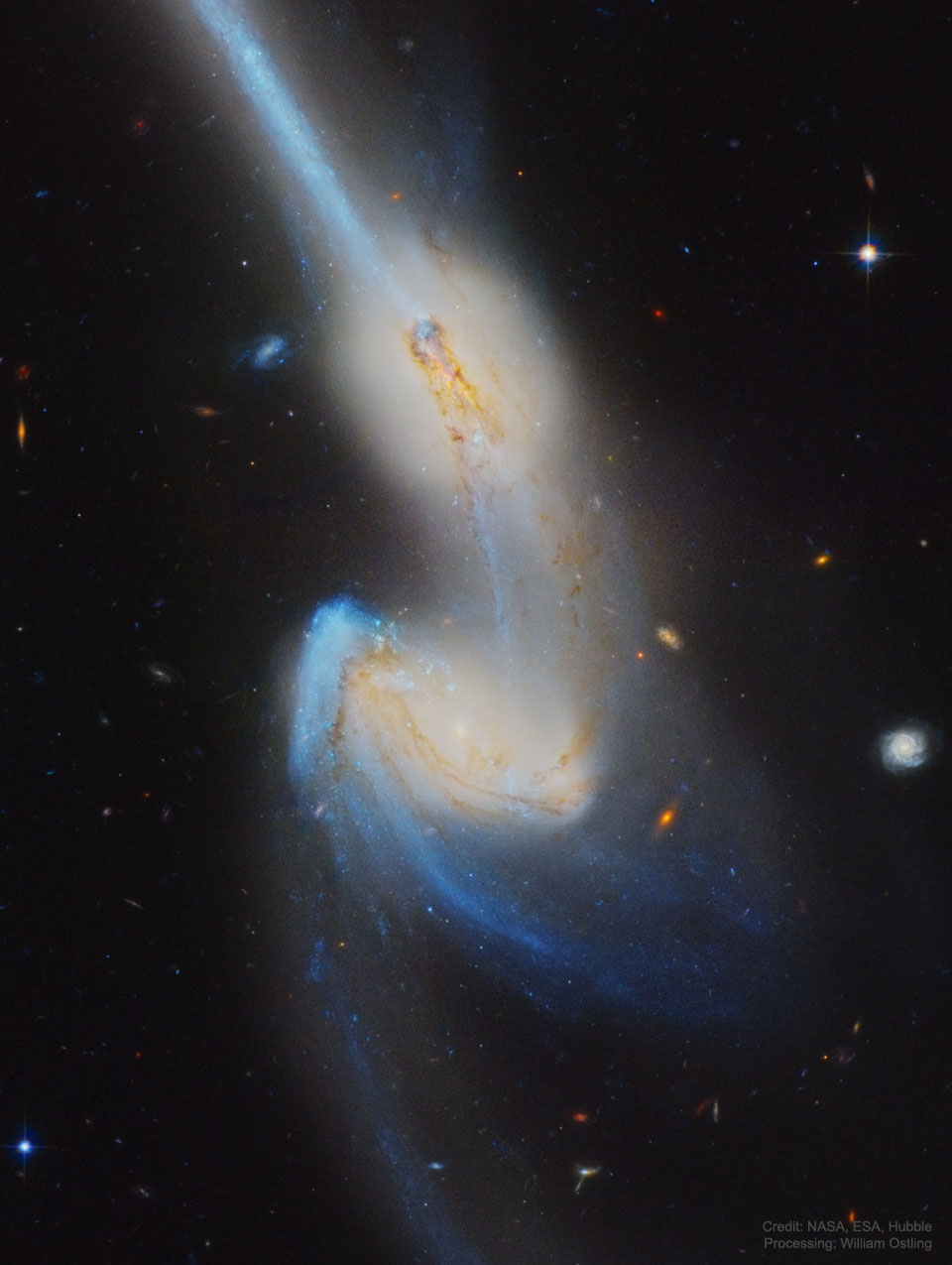NGC 4676:当老鼠相撞
(原标题: NGC 4676: When Mice Collide)
2021-10-04
浏览次数: 156
这两个巨大的星系正在相互拉开。它们被称为“老鼠”,因为它们有这么长的尾巴,每个螺旋星系都可能已经穿过了另一个。长尾是由每个星系近端和远端引力的相对差异造成的。因为距离是如此之大,宇宙间的相互作用在数亿年的时间里缓慢进行。ngc4676位于3亿光年外,朝向后发座(Coma Berenices),很可能是后发星系团的成员。这张特色照片是2002年用哈勃太空望远镜的高级巡天相机拍摄的。在接下来的十亿年里,这些星系老鼠可能会一次又一次地碰撞,这样它们就不会继续相互拉开,而是合并成一个单一的星系。在Facebook、Instagram或Twitter上关注APOD英文版
查看原文解释
These two mighty galaxies are pulling each other apart. Known as the "Mice" because they have such long tails, each spiral galaxy has likely already passed through the other. The long tails are created by the relative difference between gravitational pulls on the near and far parts of each galaxy. Because the distances are so large, the cosmic interaction takes place in slow motion -- over hundreds of millions of years. NGC 4676 lies about 300 million light-years away toward the constellation of Bernice's Hair (Coma Berenices) and are likely members of the Coma Cluster of Galaxies. The featured picture was taken with the Hubble Space Telescope's Advanced Camera for Surveys in 2002. These galactic mice will probably collide again and again over the next billion years so that, instead of continuing to pull each other apart, they coalesce to form a single galaxy. Follow APOD in English on: Facebook, Instagram, or Twitter
